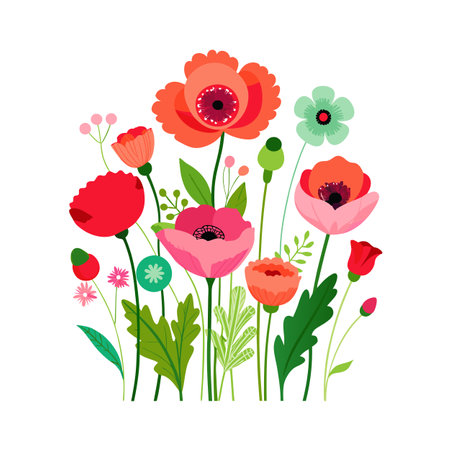Spring Awakening: Kick-Start Your Urban Garden
As winter fades, it’s time to wake up your city balcony or small urban garden for the new season. Spring brings fresh energy and longer days, making it the perfect moment to prep your compact space for a thriving year ahead. Start by cleaning out containers, window boxes, and raised beds—scrubbing away old soil and debris ensures your plants have a healthy start. Next, check for any lingering pests or disease before adding fresh potting mix. Early spring is ideal for sowing cool-season seeds like lettuce, spinach, and herbs; get them going indoors if you’re still expecting chilly nights. Don’t forget to prune perennials and trim back any winter-damaged branches from shrubs or small trees. A quick sweep of your patio or balcony clears the way for new growth, while reorganizing your tools and supplies keeps everything within reach as gardening kicks into high gear. Embrace the renewed energy of spring by planning out your planting calendar—so you’ll never miss a beat as your urban oasis comes to life.
Summer Upkeep: Maximizing Your Balcony Bounty
When summer hits, your urban balcony transforms into a lush retreat—but with the heat comes new challenges. Staying on top of essential maintenance ensures your city garden not only survives but thrives. Here’s how to keep your space flourishing through those sun-soaked months.
Watering Wisely in High Temps
Summer heat means your plants will need more frequent and strategic watering. For city dwellers, efficient watering is key to conserving both time and resources. Water early in the morning or late evening to minimize evaporation and help roots absorb moisture deeply. Consider using self-watering containers or drip irrigation systems for consistent hydration.
| Plant Type | Watering Frequency | Tips |
|---|---|---|
| Herbs (Basil, Mint) | Every 1-2 days | Check soil daily; herbs dry out quickly in containers. |
| Tomatoes, Peppers | Every 1-2 days | Deep soak; avoid wetting foliage to prevent disease. |
| Succulents | Once a week | Let soil dry completely between waterings. |
Pest Patrol: Urban Edition
Your balcony garden may be small, but it’s still vulnerable to pests—especially in summer when insects are most active. Regularly inspect the undersides of leaves for aphids, spider mites, and whiteflies. Use neem oil or insecticidal soap if you spot trouble. Encourage ladybugs or set up sticky traps as an eco-friendly solution.
Pest Monitoring Checklist
- Check for chewed leaves and sticky residue weekly
- Remove dead plant material promptly to deter infestations
- Space plants properly for air circulation and less mildew risk
Harvesting for Peak Freshness
The best part of summer gardening is harvesting your homegrown produce. Pick herbs regularly to encourage new growth—don’t let them flower too soon. Tomatoes and peppers should be harvested as soon as they ripen for maximum flavor and continued production. Remember, frequent harvesting also helps keep pests at bay by reducing hiding spots.
Bountiful Balcony Harvest Tips:
- Harvest in the cool morning hours for crispier veggies and herbs
- Use clean, sharp scissors or pruners to avoid plant damage
By following these summer-specific strategies, you’ll enjoy a thriving balcony oasis all season long—right in the heart of the city.

3. Fall Transition: Preparing for Cooler Days
As summer winds down and the air gets a little crisper, it’s time to get your small urban garden ready for fall. Staying organized with your garden maintenance tasks means you’ll enjoy vibrant autumn blooms and a steady harvest of cool-weather veggies, even on a compact balcony or patio. Start by updating your planting schedule: swap out tired summer annuals for mums, pansies, or ornamental kale, and sow seeds for crops like spinach, radishes, and lettuce that thrive in cooler temps. Don’t let summer leftovers go to waste—gather up spent plants and add them to your compost pile. This not only clears space for new growth but also creates rich soil for next season’s plantings. Take stock of your containers and vertical planters, too; clean and reorganize them so they’re ready for the changing light and weather patterns. Mulch around your perennials to help insulate roots from chilly nights, and check that your watering routine matches the season’s slower pace. With a bit of planning, your small-space city garden will transition smoothly into fall, looking fresh and staying productive right up until winter.
4. Winter Care: Protecting Your Green Oasis
As winter arrives, urban balcony gardens in the U.S. require special attention to ensure your green retreat survives the chill and is ready to thrive come spring. Cold temperatures, frosty winds, and shorter days all challenge your plants—but with thoughtful maintenance, your balcony can rest easy while you prepare for next season’s success.
Cold-Proofing Your Containers
Containers are especially vulnerable during winter because their exposed roots are more susceptible to freezing. Here are effective strategies to keep your potted plants safe:
| Strategy | Description | Best For |
|---|---|---|
| Insulate Pots | Wrap containers with burlap, bubble wrap, or move them together against a wall for extra warmth. | Ceramic, terra cotta, and smaller pots |
| Elevate Off Ground | Place pots on pot feet or wooden slats to prevent direct contact with cold surfaces. | All outdoor containers |
| Mulch Heavily | Add a thick layer of mulch or straw on top of the soil to lock in warmth. | Perennials and hardy herbs |
| Water Wisely | Water sparingly during dry spells—moist soil retains heat better but don’t overwater. | Dormant container plants |
Overwintering Select Plants Indoors
Certain tender plants—like citrus trees, succulents, or tropical annuals—won’t survive outdoors in most American climates. Bring these indoors before the first hard frost. Place them near a bright window and reduce watering frequency to mimic their natural dormant cycle. If space is limited, consider propagating cuttings to save favorites for spring planting without crowding your apartment.
Planning Ahead While Your Balcony Rests
The quiet of winter offers an ideal time to reflect and plan next year’s garden. Review what worked well and what could improve. Sketch new layouts that maximize your small balcony’s sun exposure or vertical space. Start researching native or drought-tolerant species suited for your region and order seeds early for the best selection. This proactive approach ensures you’re ready to jump into action as soon as the first signs of spring appear.
Quick Winter Balcony Garden Checklist:
- Check containers weekly for moisture and insulation needs.
- Remove any debris or fallen leaves that could harbor pests.
- Keep overwintered indoor plants away from heating vents and drafts.
- Create a garden journal or digital log to track ideas for next season.
- Inspect tools and containers; clean and repair as needed for spring prep.
By organizing your winter garden maintenance tasks now, you’ll protect your urban oasis through the coldest months and set yourself up for vibrant balcony blooms when warmer days return.
5. All-Season Organization: Keeping Your Garden Routine Hassle-Free
Living in a city often means making the most out of compact spaces, especially when it comes to your garden. To keep your seasonal tasks in check and your urban oasis thriving, it’s all about smart organization. Start by implementing low-clutter storage solutions: wall-mounted shelves, stackable bins, or even repurposed shoe organizers can hold everything from gloves to seed packets without taking up precious floor space. Next, try creating a DIY garden calendar tailored to your local climate—use color-coded sticky notes or a chalkboard near your patio door to list monthly tasks like fertilizing, pruning, or starting seeds indoors. For an extra boost, set digital reminders on your phone for those easy-to-forget chores. Simple home hacks like labeling containers, keeping tools within arm’s reach, and grouping plants by care needs will help you glide through each season smoothly. With these practical tips, you’ll never miss a beat—no matter how small your gardening space is.


